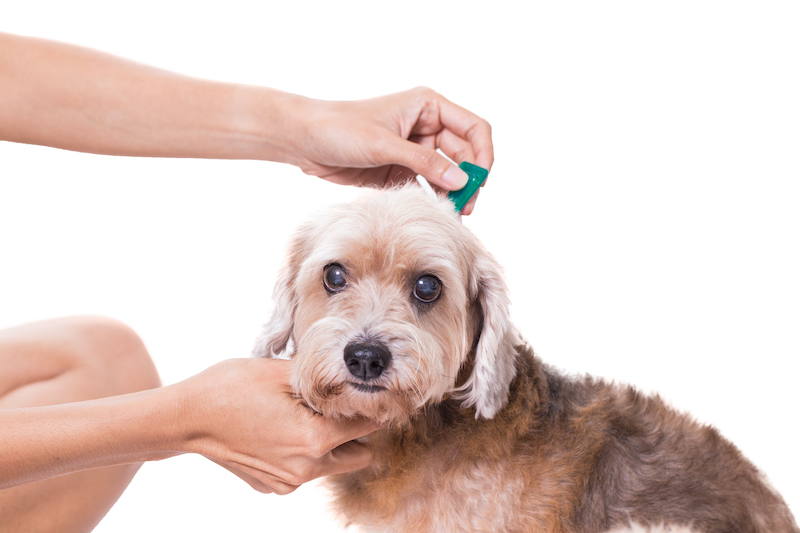
In this article we will discuss fleas on puppies and the effects they have. We all love our puppies. Cute little things that bring joy to the family after their arrival, especially to our young kids, who may probably want to cling to these puppies all day. Then, comes the scourge of fleas on puppies occasioned by the painful irritations that follow.
This sight is usually heartbreaking as we all hate to see our puppies in pain. Pain brought about by an attack by fleas.
Unfortunately, fleas are non-discriminatory bloodsuckers, who would care less about the source of their blood, so far as that source is ever ready to meet their feeding needs.
Now, the onus lies on you to protect these cuties from the rampaging prowl of fleas.
How to Tell If Your Puppy Has Fleas
Finding fleas on your puppies can make you feel rather blue. It elicits this feeling of being the worst pet owner out there. No, you’re not. These things happen and can be sometimes entirely out of your control. Fleas on puppies can be readily identified if you’re attentive to these signs:
- Increased scratching, biting and licking.
- Flea dirt, which looks like tiny black specks.
- Loss of furs.
- You may observe the adult flea themselves on your puppies.
- Red scabs or welts may develop.
- Pale gums.
- Your puppies may become restless, nervous and generally show a lack of good health.
Treating Your Puppy
While some products that kill fleas on your older dogs can also be used on puppies as young as 6 weeks, for the younger pups less than 6 weeks, a flea comb will work just fine.
- Commence treatment by thoroughly washing the puppy’s beddings, vacuuming its sleeping area and going ahead to treat the puppy’s mother (if she’s present in the same household).
- Treat your puppy with a fast-acting oral flea treatment.
- Bathe your puppy with a specially designed flea shampoo.
- Flea sprays can also be used.
- Use flea collars.
- Your puppy will need regular and constant checkups. So, continue to inspect them every day for signs of fleas.
An all-year-round treatment strategy is necessary to break the fleas’ life cycle.
Treating Your Other Pets
If your puppy has fleas, then maybe your other pets have fleas too. Commence a flew treatment on other pets. This will help to keep the flea infestation in check.
Treat Your Environment
Puppies love playing in our yards, alongside our kids. By sanitizing your yard and ridding it of all flea infestation, you’re keeping your puppies safe from fleas attack. Our yard and immediate environs are our first line of defence against these pesky pests.
Sweeping your yard for flea eggs, larvae and pupae and flooding them with water is one strategy that works well. These eggs and larvae won’t survive the ensuing flood. And if there are no eggs to mature into adults, them your puppies are safe. Flea control is just about egg control.
Apply Diatomaceous Earth around your home. With puppies around, the food-grade is recommended. It is safe and non-toxic when eaten. Visit the CDC website for more information on fleas and how to control them.
Prevention Tips
You now have vulnerable puppies in your home. Take extra care to ensure they’re safe from fleas.
- Fleas on puppies maybe brought about by untidy lawn, therefore, Keep your lawn short and neat.
- Fleas hate direct sunlight; so, reduce the number of shady shrubs, bushes and trees in your yard.
- Keep your puppies away from suspected infested areas.
- Consult your Vet on your puppy’s flea problems. Not all products are suitable for them. Your Veterinarian will recommend the right ones.
Finally, your puppies’ immune system is yet to develop at that stage of their life. So, they’re quite vulnerable to any flea attack. Fleas on puppies will wreck a whole lot of damage to their health, such that can leave you miserable. Preventive care is key to flea-free health for your puppy. Read More…